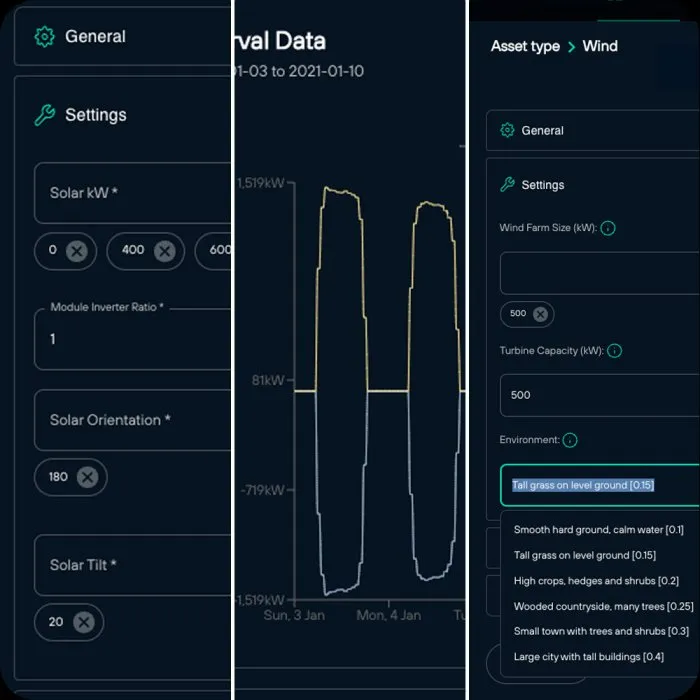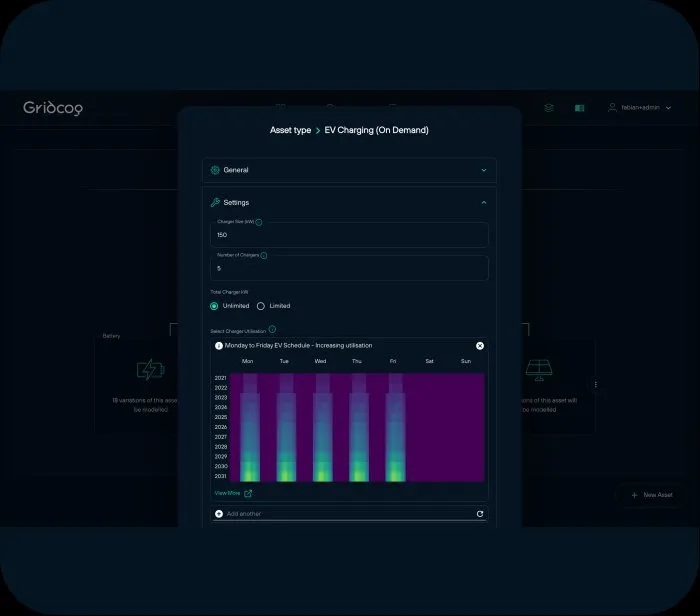

Energy Planning Tour System
Gridcog has built-in global solar irradiance and wind resource data with accurate and flexible modeling of solar generation and wind generation. Modeling considers renewable curtailment from site export limits and grid congestion, and enables simulation of control systems for optimization of generation output, including economic curtailment. You can also integrate the output of industry standard renewable generation modeling tools, like PVSyst and Helioscope, into your project models.

Battery and other energy storage technology can be modeled in Gridcog. Models consider energy storage and power capacity, degradation, round-trip efficiency, and depth of discharge. Storage systems can be configured to provide a variety of services including backup power, network demand charge management, energy arbitrage, ancillary services, and network support services. Battery control systems can be simulated, including full co-optimisation with generation and load for full value-stacking.

Gridcog can integrate electric vehicle charging: on-demand charging, smart charging, fleet charging, and bi-directional charging of electric vehicles. Trucks and buses, mining equipment, passenger vehicles, material handling systems, and light-weight micro-mobility solutions can all be modeled. Simulation of charging events considers site import limits, charger power capacity, vehicle charging requirements, and growth in future utilization, along with co-optimization of charging with electricity supply arrangements and distributed energy resources.

